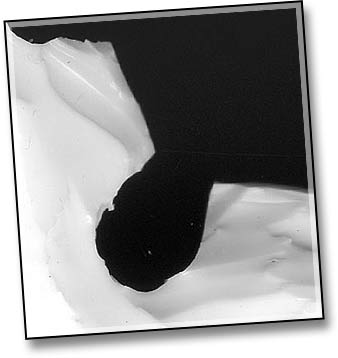File:Nutu Kaha-1.gif and Implant Finishing: Difference between pages
(== Summary == Importing file) Tag: Server-side upload |
(Page conversion via llm-mediawiki-rev -jwm) |
||
| Line 1: | Line 1: | ||
== | 'Postoperative studies have shown that the surface of an [[Category:Implants|implant]] plays a large role in the development of complications. If an implant is smoothly finished and fits the surrounding tissue like a glove, it naturally has far less negative impact. If, on the other hand, the implant has been carved and has "chiseled" edges, these seemingly minor points can, and will, irritate the surrounding tissue, leading to continued flare-ups and difficulties. | ||
While it is true that the body is pretty good at encapsulating these irritations with scar tissue (and many people could have a very rough implant inserted and never know the difference), why force your body to work extra hard to [[Wound_Healing|heal]] when all it takes is a little more effort in the manufacturing step? | |||
Additionally, if the implant is made using a porous material such as [[Teflon]], an improper finish can result in tissue actually growing into the implant — while this does keep your implant from shifting under the skin and techniques like this are commonly used by plastic surgeons, it also makes it virtually impossible to remove in the long-term without far more work. | |||
As a customer, you can minimize this risk by visually inspecting the implant. Is its surface smooth on all sides? Can you see any marks from machining (such as grooves)? Does it appear to have been roughly carved, or are the edges smooth and uniform? Does the implant's shape appear to fit your body precisely? | |||
[[File:Implant_Finishing-1.jpg|thumb|center|358px]] | |||
== Entries related to this risk == | |||
* [[Category:Implants]] | |||
* [[Genital Beading]] | |||
* [[Implant Casting]]' | |||
Latest revision as of 05:43, 17 September 2023
'Postoperative studies have shown that the surface of an plays a large role in the development of complications. If an implant is smoothly finished and fits the surrounding tissue like a glove, it naturally has far less negative impact. If, on the other hand, the implant has been carved and has "chiseled" edges, these seemingly minor points can, and will, irritate the surrounding tissue, leading to continued flare-ups and difficulties.
While it is true that the body is pretty good at encapsulating these irritations with scar tissue (and many people could have a very rough implant inserted and never know the difference), why force your body to work extra hard to heal when all it takes is a little more effort in the manufacturing step?
Additionally, if the implant is made using a porous material such as Teflon, an improper finish can result in tissue actually growing into the implant — while this does keep your implant from shifting under the skin and techniques like this are commonly used by plastic surgeons, it also makes it virtually impossible to remove in the long-term without far more work.
As a customer, you can minimize this risk by visually inspecting the implant. Is its surface smooth on all sides? Can you see any marks from machining (such as grooves)? Does it appear to have been roughly carved, or are the edges smooth and uniform? Does the implant's shape appear to fit your body precisely?
File history
Click on a date/time to view the file as it appeared at that time.
| Date/Time | Thumbnail | Dimensions | User | Comment | |
|---|---|---|---|---|---|
| current | 03:49, 16 May 2023 |  | 147 × 277 (7 KB) | Maintenance script (talk | contribs) | == Summary == Importing file |
You cannot overwrite this file.
File usage
The following 22 pages use this file:
- Hei ta'vahna
- Ka'ake
- Ka'ava
- Kea
- Koniho
- Koua'ehi
- Marquesan Ear Tattoo
- Marquesan Hand Tattoo
- Marquesan Shoulder Tattoo
- Marquesan Tattoo
- Marquesan Tattoo Motifs
- Marquesan ear tattoo
- Marquesan hand tattoo
- Marquesan shoulder tattoo
- Marquesan tattoo
- Nutu Kaha
- Omuo Puaina
- Omuo puaina
- Piaotiu
- Po'i'i
- Pohu
- Poka'a
